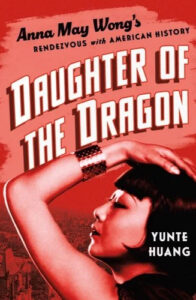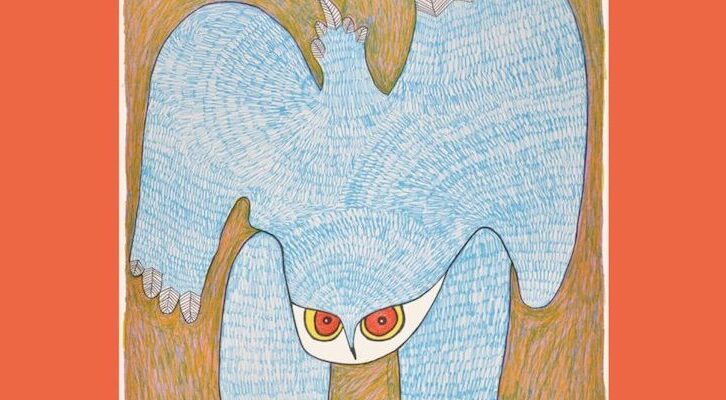From the earliest days, Hollywood and its overseas competitors and wannabes were addicted to Chinatown. In tandem with Limehouse fiction, Fu Manchu series, and Charlie Chan mysteries, the so-called China flicks—or, ahem, yellow flicks—exploited the stereotypical eerie ambience of Chinatown as the cinematic obbligato. With its exotically clad citizenry, crooked alleys, curio shops, opium dens, gambling parlors, brothels, hidden warrens, trapdoors, and an occasional flying dagger in the dark, Chinatown, whether in realist street scenes or carved out of cardboard and fantasy, appeared readymade for film noir.
In some ways one may say that Thomas Edison, who had made a short reel titled Chinese Laundry Scene in 1895, followed in 1898 by a technically more experimental Dancing Chinamen—Marionettes, was a trailblazer of Chinatown Noir. The latter film, consisting of just one scene in which two marionettes dance on strings pulled by an invisible hand, presents strangely multijointed bodies that seem to be able to perform physically impossible feats. Edison’s competitor at American Mutoscope and Biograph made Chinese Rubbernecks in 1903, a film that shows a Chinese laundryman grabbing the head of his coworker and pulling it until the neck stretches across the screen and then springs back. Such a feat, created with dummies, reflects cinematic fantasies about the supposedly robotic Chinese physique and anticipates the kind of techno-Orientalist portrayals, for instance, of Fu Manchu more or less as a mind-controlling, soul-snatching cyborg.
Rising from the steam and starch of her father’s laundry in Los Angeles, Anna May Wong (1905-1961) entered early Hollywood when many films were saturated with noirish Chinatown imagery. As I have pointed out in my book, Daughter of the Dragon, in those years when film technology was still in its infancy, the fascination with Chinatown became comingled with the very nature of cinema with its intention to capture reality on the one hand and to “shock and awe” on the other. A passing glance at the titles of those Chinese-themed pictures made close to Wong’s Hollywood debut reveals how eagerly the producers had exploited popular fantasies of turn-of-the-century Chinatown: The Chinese Lily (1914), The Yellow Traffic (1914), The War of the Tongs (1917), Mystic Faces (1918), and City of Dim Faces (1918). Wong first appeared in the 1919 film The Red Lantern, starring Alla Nazimova, the First Lady of the Silent Screen who coined the term, “sewing circle,” a discreet code for a gathering of lesbian and bisexual thespians. In the film, released in the same year as the other star-studded China flick, Broken Blossom (directed by D. W. Griffith), Wong was an uncredited extra as a lantern-carrier whose face remains unrecognizable in the crowd.
From that unceremonious beginning Wong would rise to become a global star, one that redefined the genre of Chinatown Noir. Some critics may have dismissed her as a willing participant in the concoction and perpetuation of Chinese stereotypes, but that assessment overlooks the insurmountable hurdles she had to overcome and the extraordinary talent and tenacity she had demonstrated as a star coolie, if you will, surviving and thriving in Hollywood’s proverbial Dream Factory. A stark departure from all the yellowface actors ranging from Nazimova to Mary Pickford, Myrna Loy, Barbara Stanwyck, and Luise Rainer, and frustratingly denied lead roles due to racist restrictions of Hollywood, Wong brought authenticity and nuance to her roles while trying to remain true to herself and to her heritage, undermining the stereotypes that threatened to define her.
Looking back at her astonishing career, which boasts of over sixty films, a dozen stage plays, several television series, and countless vaudeville skits, I would recommend to my fellow mystery aficionados a prime-cut selection of what I consider to be quintessential Anna May Wong movies by which she left an indelible mark on Chinatown Noir:

Piccadilly (1929)
A swan song of the silent era, Piccadilly was written by the bestselling British author Arnold Bennett and directed by the German auteur E. A. Dupont. A British film somewhat freed from straitlaced Hollywood but by no means devoid of racial bigotry, Piccadilly was a feast for the eye as it cast Wong in her most provocatively erotic and seductive role. The story involves Shosho (Wong), a scullery maid who snatches a job as the dancing star at the fashionable Piccadilly Club from Mabel Greenfield (Gilda Gray), a blonde whose Charleston routines begin to get stale. Using her erotic and youthful charm, Shosho also steals Mabel’s place in the heart of the club owner, Valentine Wilmot. In the final seduction scene, Shosho takes Wilmot back to her flat in Limehouse. Full of kitschy, derivative bric-a-brac like goldfish, pagoda lanterns, a Buddha portrait, and looming shadows of a dragon, the exotic décor suggests a den of an Oriental seductress ready to ensnare her unsuspecting prey. Appearing behind a diaphanous screen, Shosho has slipped into a braless sequined dress dangling on two thin straps, plus a matching embroidered veil. Not surprisingly, she lures Wilmot into her web. In the end, Shosho was shot dead by Jim, her jealous Chinese lover.

Daughter of the Dragon (1931)
Adapted from a Fu Manchu novel by Sax Rohmer, Daughter of the Dragon was vintage Anna May Wong. Teaming up with two of the biggest stars for Asian roles of the period—Warner Oland (my favorite Charlie Chan impersonator; see my book Charlie Chan) and Sessue Hayakawa, Wong played the lead as Ling Moy, the daughter of the “insidious Chinaman.” While in Piccadilly Shosho was just a simple, unabashed hedonist, at best a seductress with no malice, only ambition for career success, in Daughter of the Dragon Ling Moy was more cyborg than human, who in Rohmer’s potent racial imagination possesses “the uncanny power which Homer gave to Circe, of stealing men’s souls.” Inheriting the family’s mantle upon Fu Manchu’s death, she turns into a “man-daughter,” a monstrous female figure, who, like Lady Macbeth, cloaks an almost masculine pride in her ability to double-cross and to execute a murderous plot. Wong’s apotheosis as a dragon lady in this film may have drawn the ire of some racially sensitive viewers and historians, but Daughter of the Dragon is a perfect example of how talented artists, working within constraints—a virtual form of footbinding, if you will—both exploited and exploded the stereotypes cast by the film industry. Accentuated by a combination of highly stylized dialogues, flashy costumes, exotic sets, and theatrical actions, what Wong achieved with the dragon-lady persona was sharing with her audiences the thrill of being part of what might be deeply shameful, an almost illicit pleasure, exposing the stereotype as a cinematic construction rather than simple mimesis.

Shanghai Express (1932)
As a China flick, Shanghai Express was part of the enduring Hollywood tradition of casting a white actress, yellowface or not, in the exotic setting of faraway China. It is true that Josef von Sternberg’s classic was a star vehicle, not for Wong, but for his own “discovery” and new German import, Marlene Dietrich. Carrying a motley cast of passengers, including a notorious China “coaster,” Shanghai Lily (Dietrich), and a reformed Chinese prostitute Hui Fei (Wong), Sternbger’s hand-painted Shanghai Express chugs precariously through the maelstrom of wartime China. Using a Chinese-character clock as a timekeeper, the story unfolds like a murder mystery that has to be solved by a supersleuth before the train reaches its destination. The railroad journey might have set a good tempo for the plot, but the Austrian auteur was never known to be a zippy storyteller. Sternberg was far more interested in making love to his star with the camera. Every time Dietrich’s character appears on-screen, she is almost always shot full frame, as if every gesture, look, or word was loaded with significance. Under special butterfly lighting, Dietrich’s face glows in the dark like a silver moon, her wispy hair taking on lively thickness and incredible sheen. Even Ayn Rand, the patron saint of libertarianism, claimed that rarely had any time so impressed her as Shanghai Express, and when pressed for a reason, Rand spoke of the scene that was unforgettable to her: “The way the wind blown through the fur-piece around Marlene’s shoulder when she sits on the back platform of the train!”
Next to the aura of the Blonde Venus, Wong held her ground remarkably well, as her character commands a force field of her own in the film. While Shanghai Lily prances around like a dressage mare in heat, Hui Fei plays solitaire and smokes cigarettes alone, minding her own business. Shanghai Lily may speak some clever lines, such as “It took more than one man to change my name to Shanghai Lily,” but it is Hui Fei who delivers the most hardboiled quips in the film, rendered in Wong’s sultry voice with the steely firmness of Fu Manchu’s daughter. After she kills the degenerate warlord Henry Chang (Warner Oland), Shanghai Lily says, “I don’t’ know if I ought to be grateful to you or not.” Speaking like a gun moll in a classic noir, Hui Fei replies, “It’s of no consequence. I didn’t do it for you. Death cancels his debt to me.” In this China saga, with all its guns, armies, and imperial powers, no one has the power or will to change the course of history, except for Hui Fei, the lowly prostitute, who has the courage to take down a supervillain to settle a personal account. In other words, Wong’s character is the real engine driving the Shanghai Express.

Daughter of Shanghai (1938)
Dubbed the “Anna May Wong story” by studio insiders at Paramount, Daughter of Shanghai was released in 1938 when China was in the headlines every day after a full-scale Japanese invasion. In the film Wong played Lan Ying, the daughter of a San Francisco Chinatown importer. After the murder of her father, Lan Ying becomes a detective on the trail of smugglers, traveling as far as the Caribbean and occasionally having to don men’s clothes. Because of the intensity of the action involved, the director, Robert Florey, asked Wong to trim her long fingernails. For a dozen years, she had diligently cultivated the stiletto tips of her slender fingers and protected them against breakage by wearing gold guards. Like Mary Pickford’s golden ringlets or Veronica Lake’s peek-a-boo cascade, these gilded cuticle attachments had served to exoticize her presence. Yet, for the sake of making her character more believable in the film, the proverbial dragon’s daughter sacrificed her nails.
In the context of all of her sacrifices—she had died, as Wong once put it, a thousand times deaths on-screen—it is worth noting that Daughter of Shanghai was the first film in which her character is given a happy, romantic ending, although it was, of course, with an Asian man. In her star vehicle, Wong paired with the Korean American actor Philip Ahn, who played a federal agent, Kim Lee. The combined factors that Wong and Ahn were chums from high school and that Kim Lee proposes marriage to Lan Ying at the end of the film spurred the Hollywood rumor mill into wild speculations that the two Asian American actors were romantically involved, unaware that Ahn was, quite possibly, gay. In more likelihood these two actors, living in an era when homoeroticism was taboo, were using each other as a proverbial “beard.” In an industry where being “outed” as a homosexual could easily doom one’s career, these two already marginalized Asian actors faced double jeopardy and would have to tread even more carefully in a pre-Stonewall world.
***














